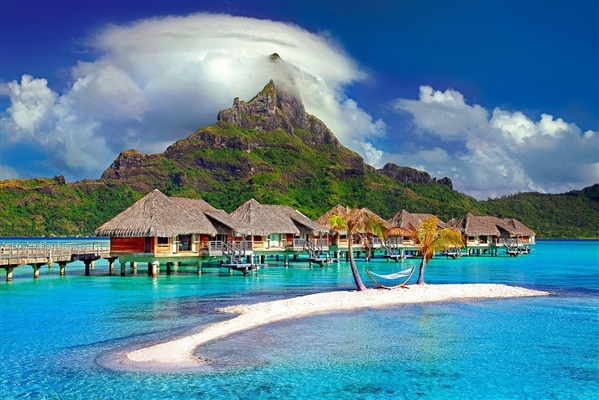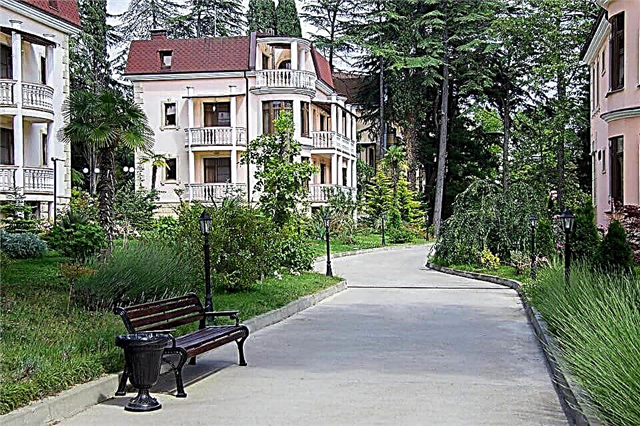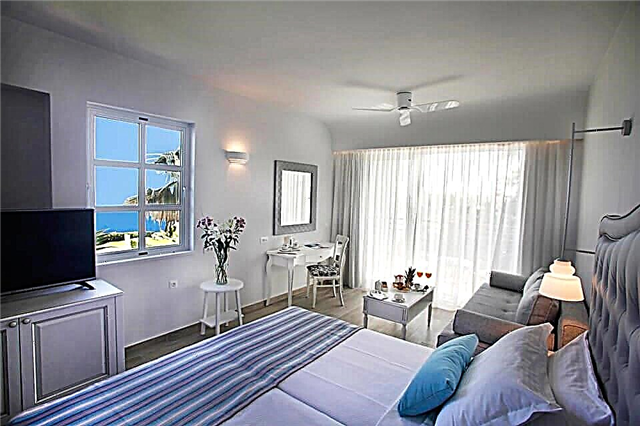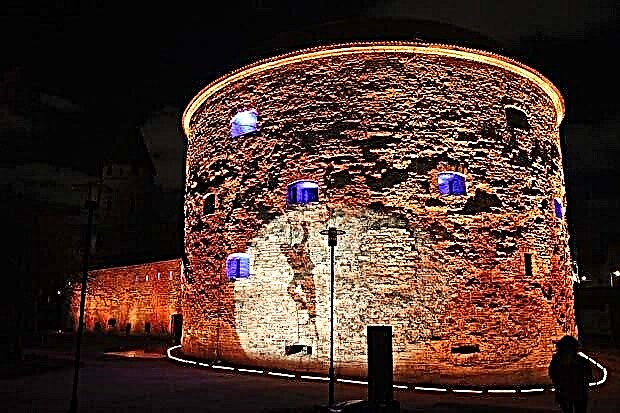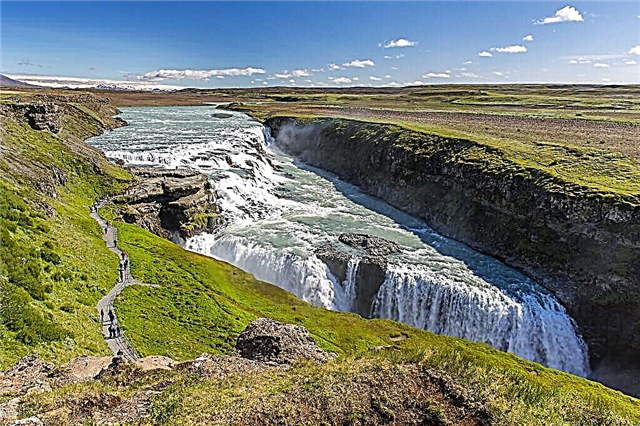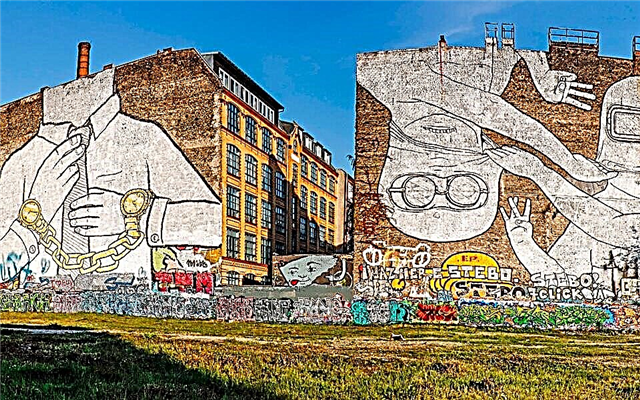Berlin with its gray sky, perfect symmetry of architecture, frozen in its splendor Gothic, the most informal, from an artistic point of view, quarters, the most delicious live beer in Europe, numerous fairs and music festivals consistently attracts people as different from each other as they are not similar to the classical self-image Berlin.
It is not surprising that at the first meeting with the city, some confusion, mistrust or even prejudice is possible, and therefore at the initial stages it is better to turn to talented and enthusiastic guides, whose excursions in Berlin in Russian will help to form the correct perception of this controversial city. We have prepared a review of the best excursions in Berlin in Russian, which are ideal for those who are not very well-versed in the city, but want to correct this annoying omission.
All Berlin - from West to East and back

This sightseeing tour will make the first impression of the city really vivid, as it includes a visit to all the iconic architectural, cultural and historical buildings of Berlin, as well as the opportunity to get a little closer to the past not only of the places themselves, but of the entire city. Such an acquaintance has a convenient three-hour format and is ideal for those who do not like long walks and "waltzing" in the flows of tourists - moving around the city takes place either using the metro - the oldest metro in Europe, with which many urban legends are associated, or with the help of specially rented bus.
Of course, it is simply impossible to see and really feel “all of Berlin” in such a short period of time, and therefore it is worth equipping yourself with notepads and pens, because there will be a lot of information: the Berlin Champs Elysees and the reconstruction of New York's Fifth Avenue, the “remains” of the Berlin Wall and the political the epicenter of the former Third Reich - and this is not even half of the proposed list.
Experience the character of Berlin

The main task of the local guide is to give every guest of Berlin to feel the city, its pulsation, to feel its breath, perhaps to become a little closer to understanding the character of the city itself - and its character is contradictory: the morning greets with concentration, a tendency to planning and the aroma of sweet bitterness from Berlin caffeine, and the evening brings a heady spirit and cheerful swagger.
This excursion will allow you to answer a number of sometimes even too curious questions. Does Berlin have an old city, and if so, why not? Where is the best kissing location in Berlin? How did the Pope decide or decided to take revenge on Berlin and why? A pleasant bonus is a visit to the always warmly welcoming Berlin Chocolate Museum, where you can not only taste delicious interpretations on the theme of cocoa beans, but also buy original sweet souvenirs that will please everyone.
Understand Berlin in 2 hours

A 2-hour guided tour of Berlin focuses on its historical dimension, echoes of which echo from the stonework of the Old Town. A passionate guide will help you trace the main milestones of Berlin's "growth" - from a tiny village, smelling of fish, to the greatest of European capitals. From the Brandenburg Embankment to the legendary St. Nicholas quarter in every sense, and then the shades of the classics of the Hohenzoller times - the architecture of the Royal Palace, the back streets of the Museum Island and the chorales of the Berlin Cathedral. And as the final chord - Gendarmenmarkt, the main square and the oldest site in Berlin with a military flavor and its own secrets.
Guide to the capture of Berlin

A colorful and extremely colorful excursion, rich in rich visual images, will allow you to plunge into the historical "whirlpool" of Berlin, and then emerge at the twenty-first century in three to four hours. The program of the sightseeing tour includes a visit to the medieval part of the city, the frightening atmosphere of the former quarter of the Third Reich, the "scraps" of the Berlin Wall and even the Reichstag, which is to be "taken" at the end of the walk.
The competence of the guide will allow you to get a lot of interesting information presented in a laconic, but extremely lively manner - questions are rather encouraged, because nothing stirs up enthusiasm like mutual interest, intoxication with the mysteries of the city, where at different times great ideologues and great architects appeared. the most beautiful monuments of human creativity and the most destructive murder weapons.
Old, evening and very alternative Berlin

Berlin is somewhat reminiscent of an impeccable clockwork, whose work is devoid of malfunctions, however, this external coldness and severity of lines have nothing to do with the real - warm and colorful - appearance of the city. And this excursion is designed to help you see just this living face, to trace, barely touching with your fingertips, its features and furrows of wrinkles in the oldest "workshop" in Berlin - here artists and artisans worked, and in the twenties it was here that the local bohemia decided to settle.
Oddly enough, the excursion begins with a banal waiting room - however, the trains left here not to both ends of Europe, but literally "behind the wall" to West Berlin, and then the former palace complexes, which have now turned into a citadel of a gallery city, a souvenir city, a city in makeup and swing echoes. But there are also several more serious accents in the upcoming walk, for example, a visit to a really old Jewish cemetery or the backyards of German communism, tied with the name of Rosa Luxemburg.
Breathe in the Berlin smoke of freedom

This excursion can be a real find, primarily for young people, or for those whose worldview quite organically fits modern art in all its manifestations, because Kreuzberg is a world of graffiti and alternativeness, which is served not in packaged form, but in a continuous stream: specific bars , art cafes, extremist museums and cinemas for connoisseurs of the genre.
A guided walk through this quarter will help you to see in detail all the hues this place has to offer: painted buildings of the Gründer era, former workshops, shielded with drawings, clinker facades and squats. Another plus will be the purely practical advice, following which - or by which, literally - it will be possible to taste the best draft beer that is brewed right in Berlin - and after all, many local bars are really considered legends.
Berlin Food Market is the best way to experience local food

Gastronomic tourism is the real character of a country, a city, a tiny street in smells, spices and shades, in tart aftertastes. This excursion is the ideal way to get acquainted with such a phenomenon as culinary Berlin, namely with the main grocery "warehouse" of the city, hiding in its most informal quarter. A distinctive feature of the market in Kreuzberg is its multinationality: German tradition in slices of roast game bread, crispy barbecue by New York standards, porous softness of New Zealand pies, Bao burgers from Thailand not too recognizable by tourists and love for them from representatives of Google ...
This excursion will become really "satisfying", because in just a couple of hours you can not only taste almost any dish, but also learn a lot of interesting and useful practical information.Dessert is a walk through the art part of Kreuzberg, for the sake of which, in fact, most tourists come here. Famous graffiti, for example, "Brezhnev's Kiss", sometimes even hide too well among the masonry, and without outside help - and in this case, without the help of an enthusiastic guide - it is not easy to find them.
Non-tourist Berlin - 100% informal

A visit to the so-called European Woodstock - the Kreuzberg quarter in Berlin - has long been a real hit in the excursion world. Many come here for the atmosphere that gave the world the best rave, others go for colorful ideas of modern art space, someone plans to look for five minutes or simply turns the wrong way - only after the first acquaintance many begin to seriously consider the prospect of doing it acquaintance with a constant, and really move to Kreuzberg.
The excursion program is designed for the evening - after all, it is at these hours that the quarter and its sometimes too strange inhabitants come to life - the lights of the Trezor, KitKat and Arena Berlin are lit up, the house at Treptow Park station is blossoming, numerous people who want to create - not only art, but also history - write their names on the main street of Kreuzberg and concurrently the main open gallery of graffiti.
Berlin catacombs

The catacombs have long been one of the most frightening chords to visit in Berlin. It is hard to imagine, but under the city, which is quite alive today, thousands of kilometers of impenetrable darkness are hidden - a huge network of tunnels unites almost medieval buildings and bomb shelters, military bunkers and rooms empty today, into which bodies were dumped.
This excursion does not have a mystical areola - there is no need to intimidate tourists with stories about spirits and flying objects - labyrinths breathe wheezingly into the ears of their guests, and quite real stories about people who were forced to hide here, about their life during the Second World War, about how how the military used the catacombs is already an unforgettable experience. Of course, the bunker, which is also supposed to be visited, is not as famous or rather replicated as Hitler's bunker, but it nevertheless shows the former life realities of people as they were.
How Hitler managed to subdue an entire nation

Berlin of the twenties is beautiful, it will remain the same a decade later - a city with a special charm, a city whose appearance was defined by an artist with the ambition of a city planner, who had enough loyal followers, whose knowledge and talent were enough to embody the ideas of its leader in stone by creating a new - symmetrical and cold - Berlin, a concentration of power.
This excursion is perfect for those who are interested in the architectural history of Berlin, in the so-called style of the Third Reich, as well as those who are in love with history and do not fully understand how people with typical German thinking could follow such a person and in spite of what. The excursion program includes visiting such places of worship and their "remains" as the ruins of the GESTAPO premises, the administrative buildings of the Third Reich, the personal departments and ministries of Goebbels and Goering, as well as the place where Adolf himself first worked and lived, and then ended his life. Hitler.
Berlin - the capital of the Third Reich

The grandiosity of the plans and pedantry distinguished the thinking of the Nazi elite even at the stage of the inception of this movement. These same grandeur and pedantry were quite organically woven into the outline of the future project of Berlin, prepared by the chief architect of the new regime, Speer, and this plan was quite modestly called "Germany - the capital of the world." New Berlin was to become a revitalized installation of the greatest cities of the past, comparable only to Babylon.
It is this excursion that will help to create the reconstruction of the same city that has not yet been erected, will allow you to look at Berlin both through the eyes of propaganda ministries and various departments, and through the eyes of ordinary Soviet soldiers who were thrown into the storming of the Reichstag. The tour is accompanied by detailed comments of the guide, who is guaranteed to be able to help every guest of Berlin, if not broaden his historical horizons, then enrich it with images and bright associative rows.
Sachsenhausen concentration camp

Auschwitz and Dachau evoke rather persistent gloomy associations in most people, but this duo was actually a trio. This "big three" also included Sachsenhausen, whose construction experience was the first in a long series of those that followed after the concentration camps, and it was he who was considered indicative.
The Sachsenhausen concentration camp differs from other memorials in that the entrance is accessible to all premises. The original idea of keeping everything in its original state is still being implemented today, so the excursion turns out to be colorful and frankly frightening. The usual visiting program includes the "hospital building", which is in fact a real testing ground for new poisons and methods of mass murder; "Operating room" from which not a single healthy person emerged; cells where prisoners were kept; and even the morgue - a huge room with an oppressive atmosphere - as if the rusty streams had never been washed away, and the smell of rotting flesh (there were so many corpses that they simply did not have time to destroy them) seemed to have eaten into the premises themselves.
Babelsberg. German history in one village

The history of Babelsberg is a really "dark" whirlpool, because a modern village, located among the most picturesque landscapes of Lake Gribnitzsee, with its measured pace of life and friendly residents, it is difficult to even try to connect with the times of the Third Reich. Difficult, but possible and even necessary.
The excursion assumes acquaintance with the past of this place, starting from the nineteenth century, when the epicenter of the construction of the most luxurious villas of the then German Empire was here, because it was here that most bankers and even the richest man in the history of Germany decided to settle. The story of truly fertile days will be disturbed by feigned grace - it was in Babelsberg that the main ideological instrument of the Third Reich was located - a film studio, where films were filmed only on a certain topic. The last echelon is the Posdam conference - a fateful one for the whole world. During the tour, guests of Germany will have the opportunity to see exactly where Churchill, Stalin and Truman lived at that time.
Top secret Berlin

Berlin's sunny surroundings were really peaceful - too peaceful, because among the hills and islets of greenery were the main channels of communication for the intelligence services - and this is not just about the German side.
This excursion is an extremely rich excursion into the past of "spy" Germany: between Berlin and Posdam is the so-called Glinik Bridge, where most of the exchanges of spies took place during the years of the "cold snap" in Soviet-American relations; then comes the quietest neighboring settlement and the safest - Klein-Glienicke - you could get here only with a special pass; Of particular interest is a visit to the remaining fragments of the former tunnel, which is the most expensive "spy" enterprise in America with the telling name "Gold". The explanations of the guide, who is well versed in theoretical material, will complement the impression of visiting these places of dual nature.
Feel the atmosphere of Berlin - evening excursion

Life in Berlin begins to "boil" and is illuminated by millions of lights with the arrival of evening, so a walk around the neighborhood and key monuments of Germany will be planned by the guide at this time. You will see: Bundestag; Reichstag; the community of contemporary Berlin artists; Khaki courtyards with an area of 27,000 sq.m .; Museum Island, uniting five complexes dedicated to art, sculptures, relics, artifacts and household items from different eras; and the largest cathedral in the city, where the burials of the Hohenzollern dynasty, including the monarch Frederick Wilhelm I, are available for inspection. This is one of the best options for cognitive leisure, which will take no more than 2.5 hours and 25 euros per person.
Kreuzberg - Berlin in all its color

Having sated enough with museum complexes and monuments, you may want something alternative, and Kreuzberg, chosen by foreigners, representatives of youth subcultures and informals, is just right for travelers hunting for creativity and creativity. This quarter has been compared to the free Amsterdam and Istanbul for its original street art, for guerrilla gardens and radical squats, for unusual street food and nightclubs.
They will tell you about the hidden symbols of forbidden graffiti, which are difficult to figure out on your own, about the architectural variety of styles from neo-Gothic to postmodern, about tunnel shoots from the times of the Berlin Wall. Carefully selected material and a rich route will present you with a capital that you definitely did not imagine, namely bold, vibrant, independent. The tour for four people will cost 88 euros.
All Bears of Berlin - excursion for children

The bear has been a symbol of the city since 1954, when it was officially approved to "represent" the coat of arms of Berlin. After this event, sculptures of a strong furry beast greet residents and travelers at shops, restaurants and souvenir shops. In the course of researching children's entertainment centers, you can "collect" a whole collection of pictures with them and decide exactly where your child wants the most, and the choice is great: the world's largest zoo; aquapark; amusement parks ("LegoLand", "Labirint"); play towns and museums (polytechnic, natural history, "Berlin in miniature", "Gardens of the world").

When moving from one children's center to another, the river Spree, churches and cathedrals, museums and squares will meet, and, of course, not without “culinary” stops at the stalls with the famous Berlin chocolate and fast food, as well as memorable trinkets. Children under 6 years old will not have to pay, and for a group of adults of up to 6 people, a three-hour introductory walk will cost 125 euros.
In the places of the Third Reich with a museum employee

For those who were impressed by the history of Germany, namely the times of the reign of Adolf Hitler, and the sad events associated with it from 1933 to 1945, there is an opportunity for 2.5 hours to personally inspect the bomb shelter, the remaining ruins and dungeons of the city, the headquarters of the SS and the Gestapo , Luftwaffe, Hitler's bunker and Holocaust memorials. Particular attention will be paid to such brutal operations as "Night of the Long Knives", during which more than 1000 stormtroopers of the National Socialist Workers' Party of Germany were killed, and "Kristallnacht", known as the first mass action to capture and exterminate Jews.
In addition, the guide will detail the material of the Nazi crimes in the basements of the Gestapo, about the German resistance to the Third Reich, and, finally, about Nazi art. Diving in Hitler's times costs 88 euros for a group of up to 6 people.
Delicious Berlin: beer and sausages

If you want to combine a gastronomic tour with an educational one, then it is worth planning the time for Friday. At 2 o'clock in the afternoon, a guide will await you, who will take you through the non-promoted establishments among tourists, but with high-quality original beer of different varieties and snacks (traditional fried sausages with a piquant sauce, yeast dough pretzels with butter and tart flambé with cheese and onions), which will allow you to spend time without unnecessary noise and enjoy the rest in an authentic setting.
The history of Berlin itself and a short excursion about the history of brewing and the intricacies of the beer industry will cost 19 euros per person, but for beer and sausages you will need to pay separately - from 3 to 6 euros for a glass of beer, and the same for snacks. The meetings are organized in groups of up to 10 people, but it is not recommended to bring children. In 4 hours you will have time to explore several sights of the city and visit three breweries.
First acquaintance with Berlin

The guide guarantees that in 4 hours you will have time to get brief information about the history of Germany from the Middle Ages and the Prussian kings to the time of the Second World War and the present. The walk will be on foot, but since all the sights are no more than 200 meters from each other, tourists do not have time to get tired and bored. The Berlin Wall, Bradenburg Gate, Reichstag, Alexanderplatz, Postdam Square, Museum Island, historic streets and government quarters, cathedrals and galleries are integral stops with accompanying explanations, everyday stories and even jokes about the situation.
The topic of the life of local residents, their mentality, traditions, salaries and work, medicine and education, hobbies and methods of raising children will also be touched upon. It is better to collect groups of 3 people, but no more than 8, then the total price for the excursion will be 95 euros, and for each subsequent tourist - an additional payment of 25 euros.
In Berlin, GuruTurizma recommends the following hotels:
Holiday Inn Express Berlin City Center
Berlin
Breakfast is included in the room rate
Exceptional based on 4,422 reviews

H2 Hotel Berlin-Alexanderplatz
Berlin
3 minutes walk from Alexanderplatz

Museum Island is a 10-minute walk away
Berlin
3 minutes walk from Alexanderplatz
Exceptional based on 9,061 reviews



